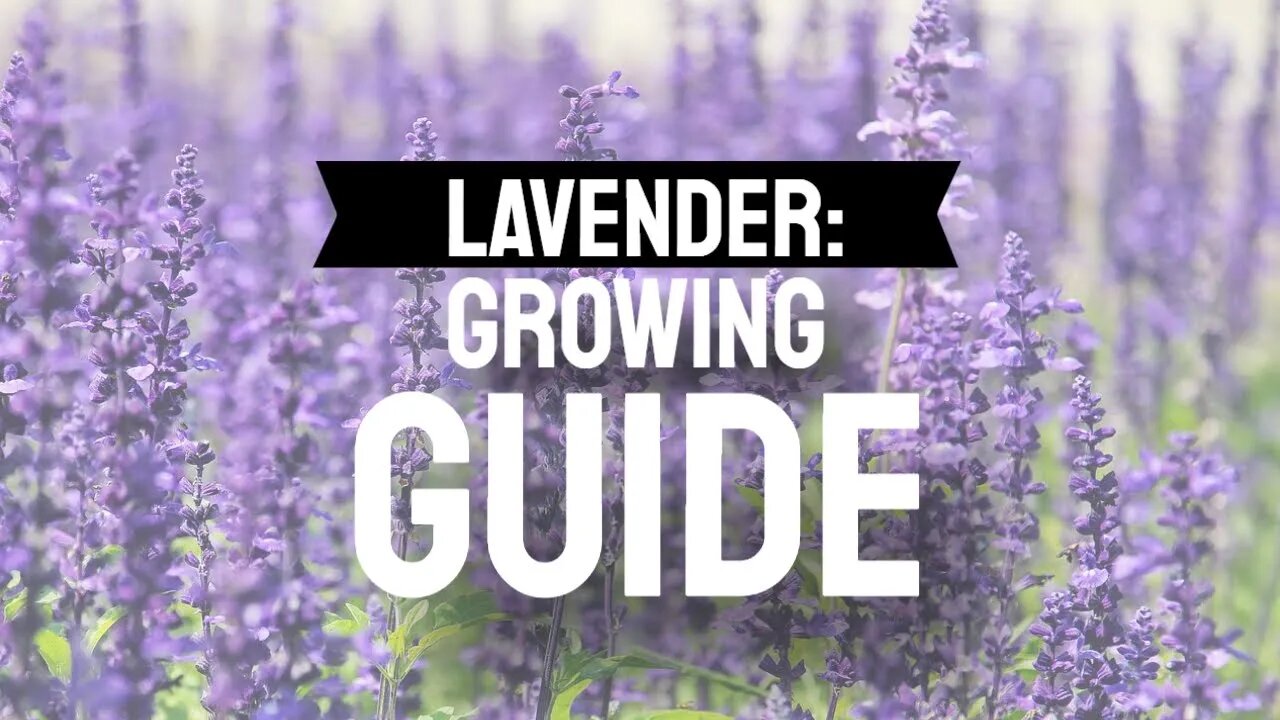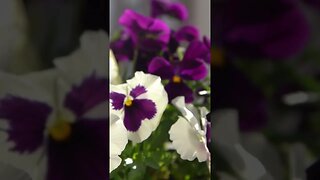Premium Only Content

Lavender: Growing Care and Uses for a Fragrant Perennial in Your Herb Garden
Lavender: Cultivation, Uses, and Aesthetics.
Lavender, a versatile and beautifully fragrant perennial herb, has been cherished for centuries. Its soft scent, striking appearance, and culinary uses make it popular among gardeners and chefs. We will explore the essentials of lavender cultivation, its culinary uses in Mediterranean and North African cuisines, and the sensory appeal of this lovely plant.
Lavender, known scientifically as Lavandula, belongs to the Lamiaceae family. There are several species of lavender, but the most commonly cultivated species is Lavandula angustifolia, also known as English lavender. This species is native to the Mediterranean region and has been cultivated for its ornamental, culinary, and medicinal properties.
Soil: Lavender thrives in well-draining, slightly alkaline soil with a pH between 6.7 and 7.3. Sandy or rocky soils are preferable, as they allow for proper drainage and prevent root rot.
Light. Lavender requires full sun, meaning at least 6 to 8 hours of direct sunlight daily. This helps the plant produce its characteristic oils and fragrance.
USDA Planting Zones. Lavender is best suited for USDA zones 5 to 9. It can tolerate some frost, but prolonged exposure to freezing temperatures can damage the plant.
Planting Lavender.
When to plant: The best time to plant lavender is in the spring, after the risk of frost has passed. This allows the plant ample time to establish itself before the winter months.
Choosing a location: Select a site with total sun exposure and well-draining soil.
Preparing the soil: Amend the soil with organic matter or sand if necessary, to improve drainage and adjust the pH level to the ideal range.
Planting: Dig a hole slightly larger than the root ball of the lavender plant. Place the plant in the hole, ensuring the top of the root ball is level with the soil surface. Fill in the hole with soil, and gently firm it around the plant.
Watering: Water the newly planted lavender deeply, ensuring the soil is thoroughly moistened.
Lavender Maintenance.
Pruning: Prune lavender plants in the spring or early fall, removing any dead or damaged stems. This will encourage new growth and maintain the plant's shape.
Watering: Water lavender sparingly, allowing the soil to dry out between waterings. Overwatering can lead to root rot and other diseases.
Fertilizing: Lavender typically does not require fertilization, but if the soil is particularly poor, applying a light, slow-release fertilizer in the spring can provide a nutrient boost.
Culinary Uses in Mediterranean and North African Cuisine.
Lavender is a staple ingredient in Mediterranean and North African culinary traditions. It flavors various dishes, such as stews, meats, and desserts. Lavender is particularly prominent in the famous Herbes de Provence blend, used to season meats and vegetables. In Moroccan cuisine, lavender is often combined with other aromatic herbs and spices, like cumin and paprika, to create mouthwatering dishes.
The Beauty of Lavender: Fragrance and Appearance.
Lavender's aesthetic appeal is undeniable. Its slender stems are adorned with grey-green, needle-like leaves, while its flowers bloom in whorls of stunning purple, pink, or white hues. The plant's fragrance is soothing and refreshing, with a unique floral, slightly camphor aroma cherished in perfumery, aromatherapy, and personal care products.
Propagating lavender.
Lavender reproduces through seeds and vegetative propagation. When propagating by seed, it is best to start them indoors 6 to 8 weeks before the last frost date. Transplant the seedlings outdoors once they have grown at least 3 to 4 inches tall.
Semi-hardwood cuttings can be taken from mature plants during late summer or early fall for vegetative propagation. These cuttings should be planted in a well-draining soil mix and kept in a sheltered, warm location until they develop roots. Once rooted, they can be transplanted to their permanent location in the garden.
Give lavender a try!
Lavender is a versatile, fragrant, and beautiful herb that can enhance any garden and add a touch of elegance to various dishes. By understanding its cultivation requirements and appreciating its culinary and aesthetic value, you can enjoy the many benefits lavender offers. Grow this lovely plant in your herb garden, and experience the enchanting world of lavender firsthand.
Connect with us
Facebook: https://www.facebook.com/TayloesLawnCare
Web: https://www.tayloeslawncare.com
MeWe: https://mewe.com/p/diyhomegarden
Image and music licensed via Canva Pro
-
 0:56
0:56
Garden Revelations
2 years agoPansies: The perfect way to add color to a fall garden (lasting to early winter in North Carolina)
103 -
 LIVE
LIVE
Glenn Greenwald
2 hours agoPam Bondi's Malicious Ineptitude on Full Display During Senate Hearing; Pro-Spying Senators Complain About Being Surveilled; What New Candace/Charlie Kirk Messages Reveal | SYSTEM UPDATE #528
1,428 watching -
 34:06
34:06
BonginoReport
3 hours agoTiger Blood & Testosterone To Make Men Manly Again! - Nightly Scroll w/ Hayley Caronia (Ep.150)
8.49K8 -
 1:07:37
1:07:37
TheCrucible
3 hours agoThe Extravaganza! EP: 49 (10/07/25)
85.2K11 -
 1:23:41
1:23:41
Kim Iversen
2 hours agoTrump To Pardon Ghislaine Maxwell? | They Mocked It as a Horse Drug — Now It Could Cure Cancer
13.3K24 -
 29:08
29:08
Michael Franzese
1 hour agoEx-Mobster REVEALS the 15 Deadliest Killers in Organized Crime
6.85K2 -
 22:07
22:07
Jasmin Laine
4 hours agoRoom ERUPTS as Trump INTERRUPTS Carney—HUMILIATES Him in Front of Reporters
5.33K19 -
 LIVE
LIVE
Wayne Allyn Root | WAR Zone
7 hours agoWatch LIVE: The War Zone Podcast with Wayne Allyn Root
60 watching -
 9:23
9:23
Red Pill MMA
11 hours agoCharlie Kirk Turned on Israel—Candace Has the Receipts!
4.04K3 -
 1:55:29
1:55:29
Redacted News
3 hours agoCharlie Kirk's Text Messages CONFIRMED ACCURATE by TPUSA, Days Before Assassination | Redacted News
119K105
